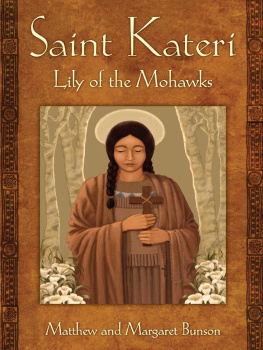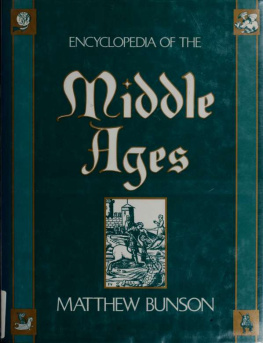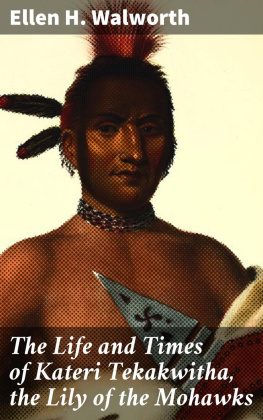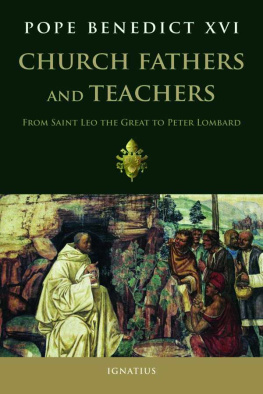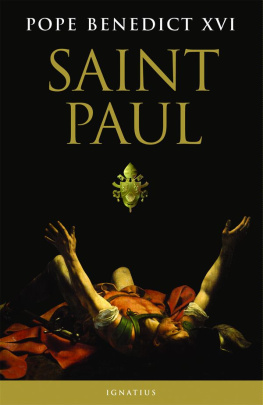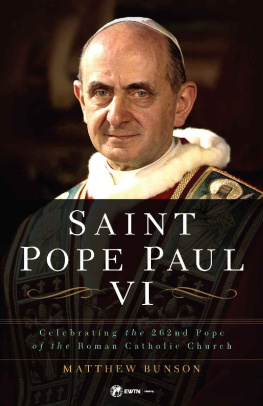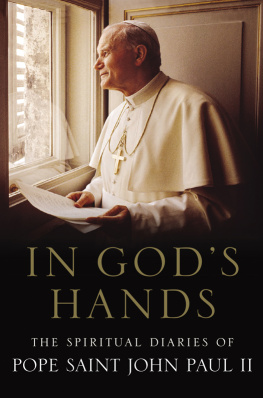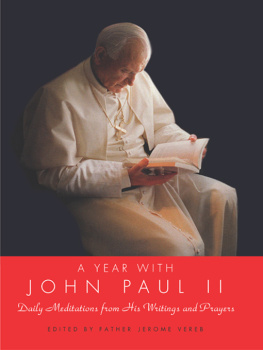
SAINT KATERI
SAINT KATERI
LILY OF THE MOHAWKS
By
Matthew E. Bunson
and
Margaret R. Bunson
Every reasonable effort has been made to determine copyright holders of excerpted materials and to secure permissions as needed. If any copyrighted materials have been inadvertently used in this work without proper credit being given in one form or another, please notify Our Sunday Visitor in writing so that future printings of this work may be corrected accordingly.
Copyright 2012 by Matthew and Margaret Bunson. Published 2012.
17 16 15 14 13 12 1 2 3 4 5 6 7 8 9
All rights reserved. With the exception of short excerpts for critical reviews, no part of this work may be reproduced or transmitted in any form or by any means whatsoever without permission in writing from the publisher. Contact: Our Sunday Visitor Publishing Division, Our Sunday Visitor, Inc., 200 Noll Plaza, Huntington, IN 46750; 1-800-348-2440; .
ISBN: 978-1-59276-791-5 (Inventory No. T1096)
eISBN: 978-1-61278-264-5
LCCN: 2012944340
Cover design: Lindsey Riesen
Cover art: Holding on to Faith, by Nellie Edwards, ImmaculataArt.com
Interior design: Dianne Nelson
P RINTED IN THE U NTIED S TATES OF A MERICA
This book is dedicated to the memory of Margaret R. Bunson (1930-2012), who passed to her reward as this book was being completed.
I am no longer my own.
I have given myself entirely to Jesus Christ.
Saint Kateri Tekakwitha
Contents
PART ONE:
THE WORLDS OF SAINT KATERI
Chapter One
The Great Wilderness
Chapter Two
The Native Americans
Chapter Three
The Black Robes
PART TWO:
THE LIFE OF SAINT KATERI
Chapter Four
She Who Puts Things in Order
Chapter Five
You Will Soon Know What a Treasure We Have Sent You
Chapter Six
A Saint Among the Just
Chapter Seven
Saint Kateris Last Days
PART THREE:
THE LEGACY OF SAINT KATERI
Chapter Eight
The Holiness of Saint Kateri
Chapter Nine
Saint Kateris Spiritual Legacy
Chapter Ten
Saint Kateris Beatification and Canonization
Acknowledgments
There are a number of people to whom a debt of gratitude is owed for their kind assistance in the preparation of this manuscript: His Excellency, Most Reverend Charles Chaput, O.F.M. Cap., Archbishop of Philadelphia; Rev. Paolo Molinari, S.J., postulator for the cause of canonization of St. Kateri; Rev. Wayne Paysse, director of the Bureau of Catholic Indian Missions; Patricia ORourke; Jane Cavolina; York Young, managing editor of Our Sunday Visitor; Jackie Lindsey, acquisitions editor of Our Sunday Visitor; and Greg Erlandson, president of Our Sunday Visitor. Special thanks are owed to Msgr. Paul Lenz, P.A., for his many decades of friendship and his tireless labors on behalf of Native American Catholics and the cause of canonization for Saint Kateri.
Foreword
by Monsignor Paul A. Lenz,
Executive Director Emeritus, Bureau of Catholic Indian Missions,
Washington, D.C., and vice-postulator for the Cause for Canonization of Kateri Tekakwitha
When the beatification of Blessed Kateri Tekakwitha took place at Saint Peters Basilica in the Vatican on June 20, 1980, as the national director of the Bureau of Catholic Indian Missions of the United States, I was assigned to be in charge of necessary details. A large pilgrimage for the beatification liturgy was organized and a group of several hundred went to Rome.
While in Rome a request came to me for an interview on worldwide Vatican Radio. One of the first questions I was asked was, Did Kateri Tekakwitha really live, or has she just been a name to please the Indians? I was grateful for the question because it gave me the opportunity to tell of the tremendous amount of written information prepared by the Jesuit missionaries before she died, and of the incredible number of books that have been written since her death in 1680 to the present day.
For the canonization of Blessed Kateri, one miracle was needed by the Congregation for the Causes of Saints at the Vatican. I was named by the Vatican as the vice-postulator to assist Father Paul Molinari, S.J., the postulator in Rome. With a dedicated tribunal from the Archdiocese of Seattle, it took almost three years of work and investigation, but the miracle of a six-year-old Indian boy, Jacob Jake Finkbonner, being totally cured from a flesh-eating disease, necrotizing fasciitis, was approved. When doctors could not find that any of their expertise or medicines were the cause of the cure, it became certain that the thousands of prayers and the laying on of a relic of Blessed Kateri to Jacobs body were the reasons she interceded for the cure.
This book, Saint Kateri: Lily of the Mohawks, gives account after account about the saintly life Kateri lived and highlights how the Jesuit priests were aware of the wonderful, truly devout Mohawk Indian. Father Jacques de Lamberville, S.J., was the first priest to recognize the spiritual qualities in the youthful Kateri. Jesuit Fathers Claude Chauchetire and Pierre Cholenec also spent much time praying with her and writing many pages while observing her holiness. Detailing what the Jesuits wrote of her before she died and compiling much about the appearances of Kateri and the miracles worked by her after her death, this book offers readers an intimate look at the life and spiritual legacy of the saintly Kateri Tekakwitha.
Timeline
c. 1000 The ancestors of the Iroquois settle in the Finger Lakes region in New York.
1492 Christopher Columbus reaches the New World. At the time of his arrival, it is estimated that there were twenty million Native Americans spread out across North and South America; approximately two million inhabited North America.
1534 to 1541 The French Jacques Cartier explores parts of North America; his accounts capture the imagination of France.
c. 1550 The Iroquois League, or Five Nations, is established among the Mohawk, Onondaga, Oneida, Cayuga, and Seneca under the leadership of Dekanawidah, the Great Peacemaker, and Hiawatha. By the early seventeenth century, the Iroquois reach their zenith of power in North America, with a population of approximately twelve thousand.
1604 The French establish the earliest temporary French mission in what became the United States, probably on an island in Passamaquoddy Bay, between Maine and New Brunswick.
c. 1608 Samuel de Champlain visits the area of the Saint Lawrence River Valley and encounters native peoples. He founds the great city of Qubec, which becomes the capital of New France.
1609 The Iroquois League begins the Beaver Wars with the French and their allies, the Huron, over control of the fur trade in the Northeast.
1615 The Dutch start a trading post at Orange, modern-day Albany, New York. That same year, the first French missionaries, four Recollect Franciscans, arrive.
1625 The first Jesuits arrive in Canada, and the Black Robes, as they were called, set out to evangelize the wilderness of North America.
1628 The Mohawk defeat the Mohican Indians and secure control of the fur trade with the Dutch.
1642 The great Jesuit Saint Isaac Jogues is captured with several companions, including fellow missionary Saint Ren Goupil, by the Mohawk. Goupil is martyred, and Jogues endures unspeakable tortures that leave him terribly mutilated.
1645 A peace treaty is signed between the Iroquois and the Huron, Algonquin, and French.
1646
Next page
